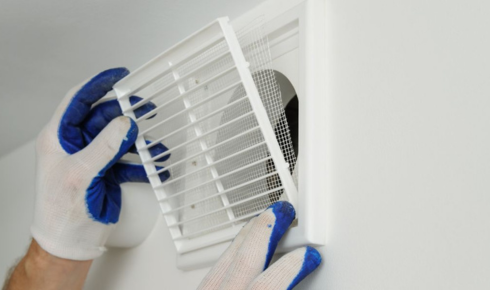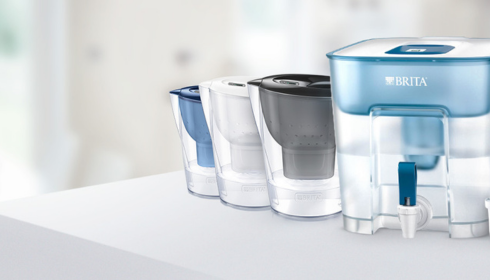There’s something undeniably comforting about retreating into your bedroom at the end of a long day. It’s your cocoon—the place where you recharge, relax, maybe scroll for too long, and finally drift off. But here’s the thing most people don’t think about: if the air in your bedroom isn’t circulating properly, it doesn’t matter how soft your sheets are or how dark your blackout curtains get. You’re not going to feel your best.
Good air circulation isn’t just a luxury—it’s essential. Especially if your room doesn’t have windows. Or maybe you keep them shut most of the time. Either way, stale air creeps in, and it does more than just feel off. It can mess with your sleep, your skin, and your health.
So let’s talk real-world bedroom ventilation ideas that actually work—without needing to remodel your house or knock down walls.
The Trouble With Still Air
We don’t always notice stagnant air right away. It’s subtle. You wake up groggy even after eight hours. The room feels warm, but also… not quite fresh. There’s a dampness, a heaviness. Maybe a slight musty smell hiding in the corners.
That’s not your imagination. Poor ventilation allows carbon dioxide to build up. It traps moisture and allergens. And if there’s no window, or if airflow is restricted, the room becomes a sealed box where air just lingers and recycles itself.
Not ideal, right?
Let’s Start With the Basics: Why Ventilation Matters
Before we jump into solutions, it helps to understand what ventilation actually does.
In simple terms, it removes stale, polluted, or humid air and replaces it with cleaner, fresher air. That can happen naturally (think open windows and breezes), or mechanically (fans, vents, air purifiers). The goal? Keep the oxygen flowing, reduce pollutants, and maintain a balanced level of humidity.
Without this balance, your bedroom becomes a petri dish for dust mites, mold spores, bacteria, and VOCs (volatile organic compounds). And yes, that’s just as gross as it sounds.
The Challenge of Windowless Rooms
Maybe your bedroom is in the basement. Or it’s an interior room in an apartment with no external walls. Either way, you’ve probably asked yourself, how to ventilate a room without windows—and not found many good answers.
Here’s the truth: It’s absolutely possible. It just takes a little creativity and a couple of smart tools.
1. Install a Ventilation Fan (Your First Line of Defense)
This one might seem obvious, but it’s often overlooked. A ceiling-mounted or wall-mounted exhaust fan can do wonders in moving air out of a sealed room.
If you’re not dealing with a window, you can route the exhaust to a hallway, a crawlspace, or even use a ducted system that vents to the roof. Bonus: many of these fans are whisper-quiet and have built-in humidity sensors.
They’re not just for bathrooms. And trust me, once installed, you’ll feel the difference.
2. Use an Air Purifier With HEPA and Carbon Filters
Not all ventilation has to mean pushing air outside. Sometimes it’s about cleaning the air that’s already there.
High-quality air purifiers (we’re not talking those $30 desk toys) can remove allergens, dust, pet dander, and even some bacteria. Look for models with both HEPA and activated carbon filters—they trap both particles and odors.
It’s not a replacement for real airflow, but in windowless spaces, it’s a vital piece of the puzzle. Especially when paired with fans or HVAC.
3. Crank Up the Circulation With a Box Fan or Oscillating Tower
Fans are the unsung heroes of indoor air quality. A good oscillating fan doesn’t just move air around—it helps prevent that trapped, swampy feeling from settling in.
One simple hack? Place one fan near your door to pull in fresher air from the rest of the house, and another near the back wall to push air across the room. You’re creating a makeshift airflow loop that simulates cross-ventilation.
And yes, it works better than you think.
4. Air Quality Tech Is Your Friend
Ever seen those sleek little air monitors online that track temperature, humidity, and CO2? They’re not gimmicks. They’re actually super helpful in figuring out what your room really needs.
If CO2 levels spike overnight, it means you need more fresh air coming in. If humidity hits 70%? Time to run a dehumidifier or increase ventilation.
Having hard data helps you fine-tune your setup instead of guessing.
5. Consider a Ductless Mini-Split HVAC System
Okay, this one’s not exactly budget-friendly, but if you’re in a long-term home and dealing with serious ventilation issues, it’s worth it.
Ductless mini-split systems don’t just cool or heat—they also filter and circulate air. Some newer models even have built-in air purifiers. You get precise control, year-round comfort, and cleaner air… all without needing ducts or windows.
It’s a game-changer, especially for air ventilation for closed room situations where fans and purifiers aren’t cutting it alone.
6. Houseplants—Yes, They Actually Help
Look, we’re not saying a few succulents are going to replace your HVAC system. But certain plants do improve indoor air quality. Think snake plants, peace lilies, and pothos. They help regulate humidity, absorb some toxins, and let’s be honest—they make the room feel a bit more alive.
They’re not magic, but they’re a great low-effort boost.
7. Leave the Door Open (Whenever You Can)
It sounds too simple to matter, but leaving your bedroom door open, even just a crack, helps prevent air stagnation. Especially if the rest of the house has better airflow.
Got a ceiling fan in the hallway? Run it. Let the air from outside your room mingle with the air inside it. Sometimes, basic is best.
Wrapping It Up: Air That Moves Is Air That Heals
We don’t always think about it, but we spend a third of our lives asleep. And a huge portion of that time is spent breathing in whatever’s floating around our bedrooms. Good air circulation makes all the difference in how we sleep, wake, and live.
And you don’t need to knock out walls or install industrial ductwork to get there.
From budget-friendly fans and purifiers to smarter systems and layout hacks, there’s always a way to improve your space.




